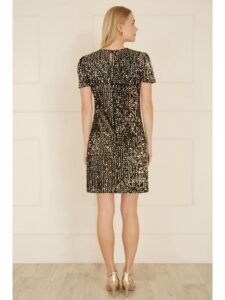How Does Wool Compare to Flannel in Durability?
Introduction
Fabric compatibility is crucial in fashion and sewing, influencing the final product’s look, feel, and longevity. Wool and flannel are popular for their warmth and comfort, but how do they fare when combined? In this article, you’ll discover the compatibility of these fabrics, their properties, and practical tips for sewing and styling.
Compatibility Analysis
Can Wool and Flannel Be Used Together? Yes, wool and flannel can be combined effectively, but understanding their properties is key to achieving a harmonious blend.
Why They Work Together:
- Texture and Weight: Wool typically has a coarser texture and is heavier, while flannel is softer and lighter. The contrast can create visual interest and tactile appeal.
- Stretch and Elasticity: Both fabrics have limited stretch, making them stable for structured garments.
- Care Requirements: Wool requires gentle care, while flannel is more forgiving, but both need attention to washing and drying to prevent damage.
- Durability: Wool is renowned for its durability, resisting wear and tear, while flannel is less durable but offers cozy comfort.
Fabric Properties Comparison Table
| Property | Wool | Flannel |
|---|---|---|
| Fiber Content | Natural (wool fibers) | Natural or synthetic |
| Weight and Thickness | Heavy, dense | Light to medium |
| Breathability | High | Moderate |
| Moisture-Wicking | Excellent | Moderate |
| Stretch and Elasticity | Low | Low |
| Wrinkle Resistance | Moderate | Low |
| Care Instructions | Hand wash, cold water | Machine wash, warm |
| Durability | High | Moderate |
Benefits of Mixing These Fabrics
- Enhanced Texture and Visual Interest: The contrasting textures of wool and flannel add depth to garments.
- Improved Comfort and Performance: Wool’s insulation and flannel’s softness create a cozy, functional blend.
- Better Drape and Movement: The combination offers a balanced drape, suitable for various styles.
- Cost-Effectiveness: Mixing can reduce costs by using less of the more expensive wool.
- Seasonal Versatility: Ideal for fall and winter, providing warmth and style.
- Design Possibilities: Offers creative opportunities in both fashion and home decor.
Potential Challenges
- Different Shrinkage Rates: Pre-wash fabrics to minimize shrinkage issues.
- Conflicting Care Requirements: Follow the gentler care instructions to avoid damage.
- Texture Clash or Pilling: Use a fabric shaver to manage pilling.
- Seam Puckering: Use proper tension and needle size to avoid puckering.
- Color Bleeding or Fading: Test for colorfastness before combining.
Sewing & Styling Tips
- Sewing Techniques: Use a walking foot to manage different fabric weights.
- Needle and Thread: A universal needle size 80/12 and polyester thread work well.
- Interfacing and Stabilizer Needs: Lightweight interfacing can stabilize seams.
- Seam Finishing Methods: Use serging or pinking shears for clean edges.
- Pattern Selection Advice: Choose patterns that highlight the textures of both fabrics.
- Styling Ideas: Layer wool and flannel for cozy, stylish outfits or use them in rustic home decor.
Care & Maintenance Guide
- Washing Instructions: Hand wash wool items; machine wash flannel separately.
- Drying Recommendations: Air dry wool; tumble dry flannel on low.
- Ironing and Steaming Tips: Use a pressing cloth for wool; iron flannel on medium heat.
- Stain Removal: Treat stains promptly with appropriate solutions for each fabric.
- Long-Term Care: Store wool garments folded to prevent stretching.
FAQ Section
- Can you wash wool and flannel together? It’s best to wash them separately to preserve each fabric’s integrity.
- Will wool shrink more than flannel? Wool is more prone to shrinkage, so handle with care.
- What needle size should I use for sewing these fabrics together? A size 80/12 universal needle is suitable.
- Can you mix wool and flannel in one garment? Yes, they can be combined for unique designs.
- How do you prevent seam puckering when combining these fabrics? Adjust sewing machine tension and use a walking foot.
- Is it okay to mix wool and flannel for upholstery? Yes, but ensure both fabrics are durable enough for high use.
- What’s the best way to finish seams with these fabrics? Serging provides a professional finish.
By understanding the properties and compatibility of wool and flannel, you can create beautiful, durable garments and decor that stand the test of time. Whether you’re a seasoned seamstress or a DIY enthusiast, these insights will help you make informed choices for your projects.


Leave a Reply